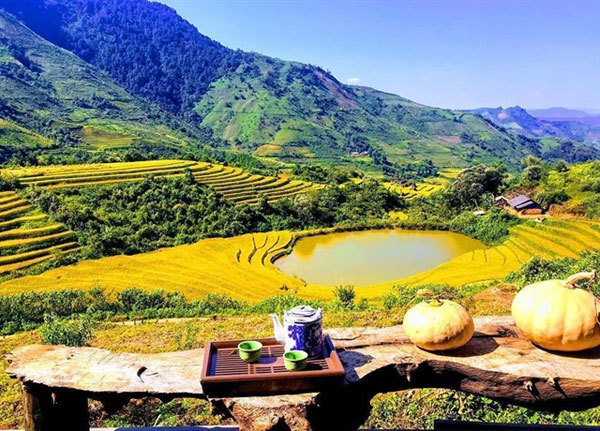 |
| Sin Suoi Ho Village has a beautiful natural landscape, cool climate all year round. Photo laichau.gov.vn |
From Lai Chau City, following the paved road, passing the winding curves of the passes hidden in the clouds, the village appeared before our eyes.
Since 2015, Sin Suoi Ho has been recognised as a community-based tourism village.
According to the head of the village, Vang A Chinh, Sin Suoi Ho used to be home to a large number of drug addicts. However, since 2005, the number of addicts has decreased gradually. To date, there are no drug addicts in the village thanks to the development of community-based tourism. From being a poor village, after 15 years, nowadays, the incomes of households have increased from tourism and selling local products such as orchids, cardamom, brocade and products made of rattan and bamboo.
Golden spring
Sin Suoi Ho in Mong language means "golden spring", conjuring up the image of a peaceful small village, full of fruit trees with waterfalls and streams whispering all night and day.
Located 1,500m above sea level, the village has a cool and fresh climate. These are also favourable conditions for developing eco-tourism.
Coming to the village, we were surprised to see with the wooden and earthen houses with the typical architecture of the Mong ethnic minority. The unique highlight of these houses is a hand-lined stone fence surrounding the house. This structure creates a solid house and serves to be cool in summer and warm in winter. The village still has dozens of traditional houses, creating a charming landscape.
The village also attracts tourists due to its rich cultural and spiritual life. The most special are traditional festivals with typical features such as the Gầu Tào festival, the most important festival of the Mong, held in early spring to express their gratitude to Heaven and Earth and pray for good luck and happiness in the new year and Lễ Mừng Lúa Mới (new rice ceremony). Women in the village still wear and weave traditional clothes made from linen. Along with that, traditional professions such as brocade embroidery, winemaking, knitting and forging bring stable incomes.
With rich and diverse natural and human resources, Sin Suoi Ho has drawn domestic and foreign tourists. Although it just started to do tourism a few years ago, this place has become a bright spot for community-based tourism in Lai Chau Province due to the methodical, conscious and professional attitudes of the locals.
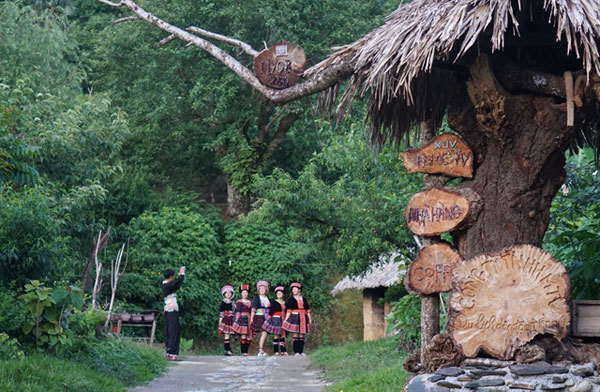 |
| There are around 10 homestays in Sin Suoi Ho Village. Photo laichau.gov.vn |
Developing community-based tourism
The village has nearly 130 households, all of whom are Mong people, of which 10 households are engaged in community-based tourism. With the support of the local authorities, families have refurbished their houses, repaired toilets and bought blankets and pillows to welcome guests.
Currently, Sin Suoi Ho can accommodate more than 100 tourists per day and night with prices ranging from VND70,000-100,000 per person every night. On average, each year, the village welcomes about 100,000 domestic and foreign visitors.
According to Chinh, many other households are also upgrading their guesthouses to serve tourists.
Thanks to its favourable climate, the village has become a place to develop cymbidium orchid. Many families in the village have enjoyed a significant increase in income from growing and selling cymbidium orchids to tourists.
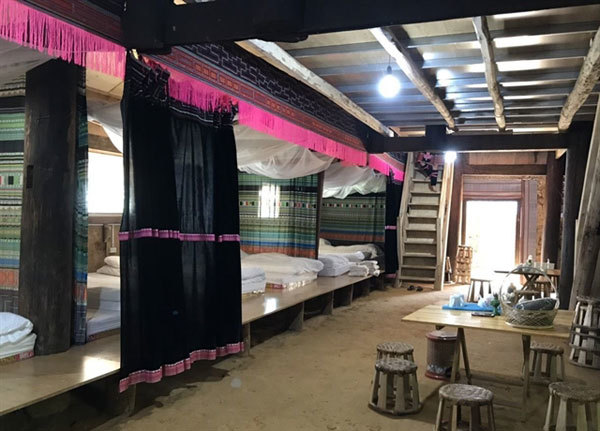 |
| A homestay in Sin Suoi Ho Village. Photo laichau.gov.vn |
“On average, each household here earns VND30-50 million per year from growing orchids. Households who both do homestay services and grow orchid also collect VND200-300 million per year. With that benefit, people now decorate their houses and multiply cymbidium orchids gardens to welcome tourists. We are also supported by the local government in training to make tourism more professional,” said Vang A Giang, an owner of a cymbidium orchids garden.
The land used to grow opium in the past has flourished with more than thousands of orchid pots, peach trees, táo mèo (táo means apple, and mèo is a word of the Mông minority), 10 homestays and a restaurant.
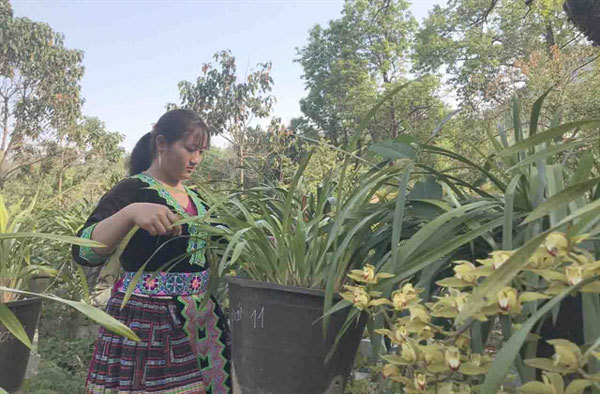 |
| A local takes care her cymbidium orchids garden. Photo baolaichau |
To better serve tourists, the village plans to make completely natural products in the traditional style of Mong people such as shampoo, soap, hand sanitiser, dishwashing liquid and bath medicine.
Vang A Tua said that every person in the village feels very happy and proud to have visitors come to experience the life and culture of the Mong. Tourism also brings significant income to help improve their lives.
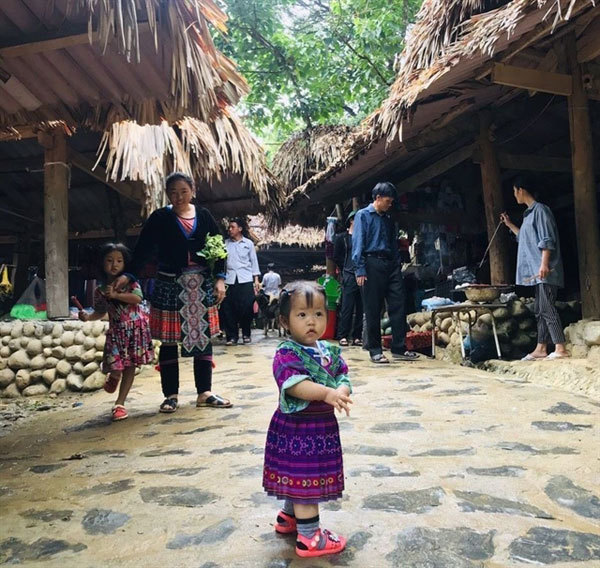 |
| A children seen at the Sin Suoi Ho Market. Photo laichau.gov.vn |
Locals also raise pigs and chickens and grow vegetables to serve customers, avoiding foods that use preservatives or stimulants.
Chinh said the village is working towards not using plastic bags and instead of making bamboo baskets, pipes or simply buying and selling goods in the village wrapped in banana leaves.
The locals are also aware that one of the advantages of attracting tourists is it helps preserve the identity of the Mong people.
“We want to introduce tourists to understand more about the identity of the Mong people. Each homestay family wears traditional clothes, makes the specialities of the Mong and lives with their own customs with visitors coming here. This is both the responsibility of preserving the national culture, and also a unique point that helps us make use of it for tourism. This will make visitors love and come back to us," said Sung Thi Le, a resident of Sin Suoi Ho.
“The experiences of culture, nature and people in Sin Suoi Ho have given me a good impression. The most impressive thing is a small clean village, everywhere are orchids and fruit species. We enjoyed dishes with unique flavours of the Mong people such as mèn mén (steamed minced maize), cardamom juice, vegetables and bamboo shoots,” said Bach Van Anh, a visitor from Hanoi after a trip of three days and two nights in Sin Suoi Ho Village. VNS
Truc Lam
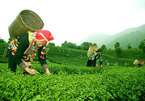
Lai Chau develops community tourism
The northern province of Lai Chau, situated 450km northwest of Hanoi, is not as popular a destination as Sa Pa in Lao Cai Province or Moc Chau in Son La Province. Yet it has a primitive and mysterious beauty that is well worth exploring.
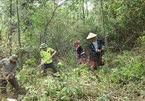
Forest environmental services policy changes the lives of northwestern people
Vang A Chinh, head of the Sin Suoi Ho Village, enters the forest every day to check a forest area that he was allocated to look after in 2012 by the forest management board in Sin Suoi Ho Commune, Lai Chau Province.